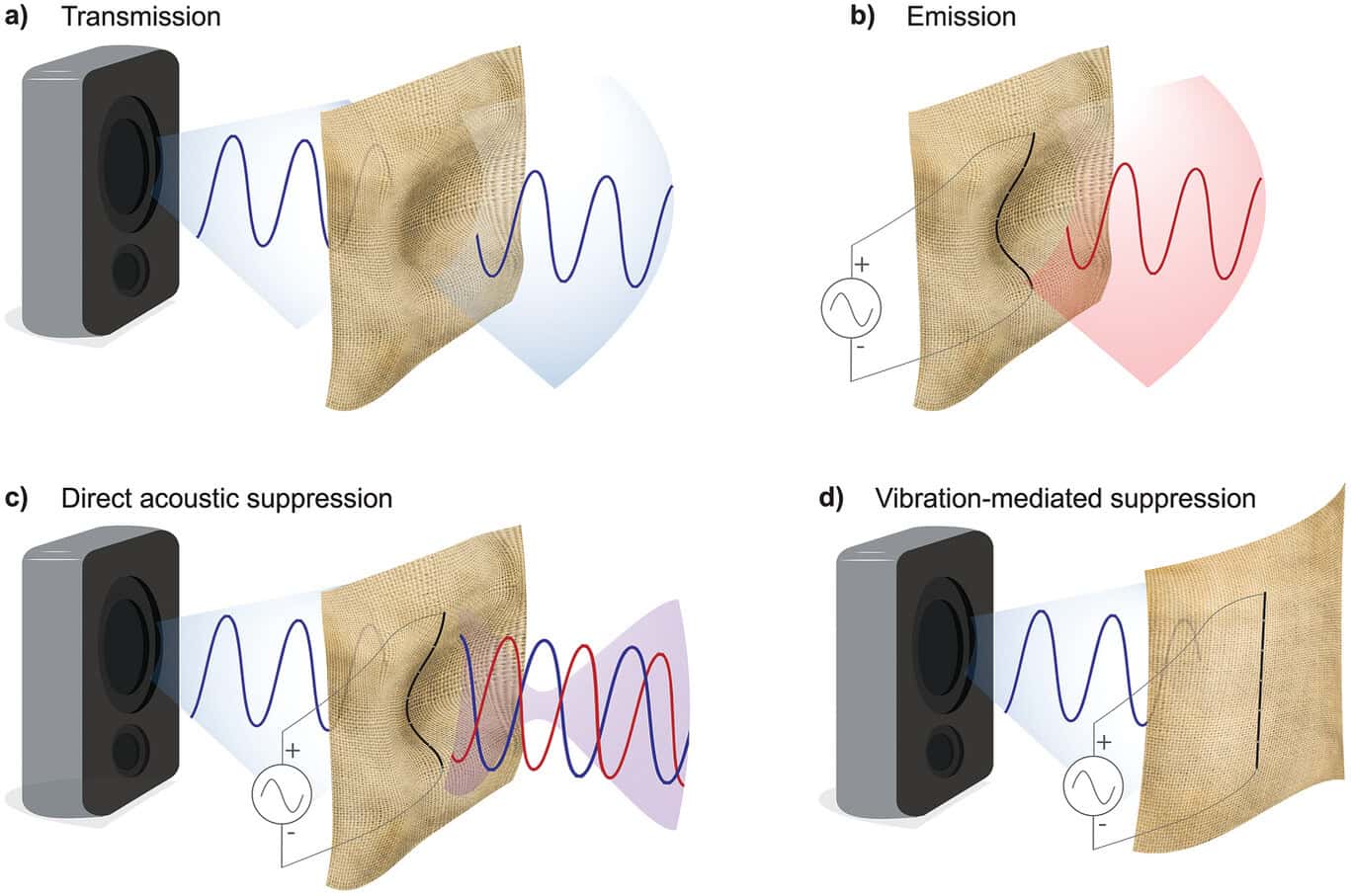In today’s urban environment, where the constant background noise can disrupt our daily lives, a breakthrough in sound-suppression technology offers a promising solution. Scientists at MIT have developed an extraordinary silk fabric that, despite its ultra-thin nature—barely thicker than a human hair—effectively reduces noise transmission in large spaces.
This isn’t your typical fabric; its soundproofing capabilities stem from piezoelectric fibers that keep it stationary, thus blocking acoustic vibrations. The innovation doesn’t end there: this special fabric serves a dual purpose. Firstly, it can produce sound waves that counteract unwanted noise, similar to noise-canceling headphones. Secondly, by remaining motionless, it reflects sound, preventing its transmission in enclosed spaces.
Professor Yoel Fink, the senior author of the study, highlights the significance of this technology in creating quiet spaces without the need for bulky soundproofing materials. The use of lightweight materials like silk and muslin makes this technology accessible and versatile. Imagine transforming noisy environments like offices or bedrooms into tranquil retreats simply by strategically placing this fabric.
The benefits extend beyond convenience; in increasingly noisy urban environments, creating quiet spaces could enhance mental well-being and productivity. Chronic noise exposure is linked to health issues like heart disease and sleep disturbances, affecting millions worldwide.
The fabric’s mechanism relies on piezoelectric fibers woven into the fabric, which generate vibrations to produce sound waves that cancel out environmental noise. While the current system effectively reduces noise levels by up to 65 decibels, researchers are excited about its potential applications in various settings.
Lead author Grace Yang emphasizes the value of creating silence amidst a noisy world. The fabric’s ability to adapt to different sound frequencies and its potential for large-scale noise reduction opens new possibilities for public and private spaces alike.
This groundbreaking technology, detailed in the journal Advances Materials, offers hope for a quieter, more peaceful future in a world where silence is increasingly rare.















































